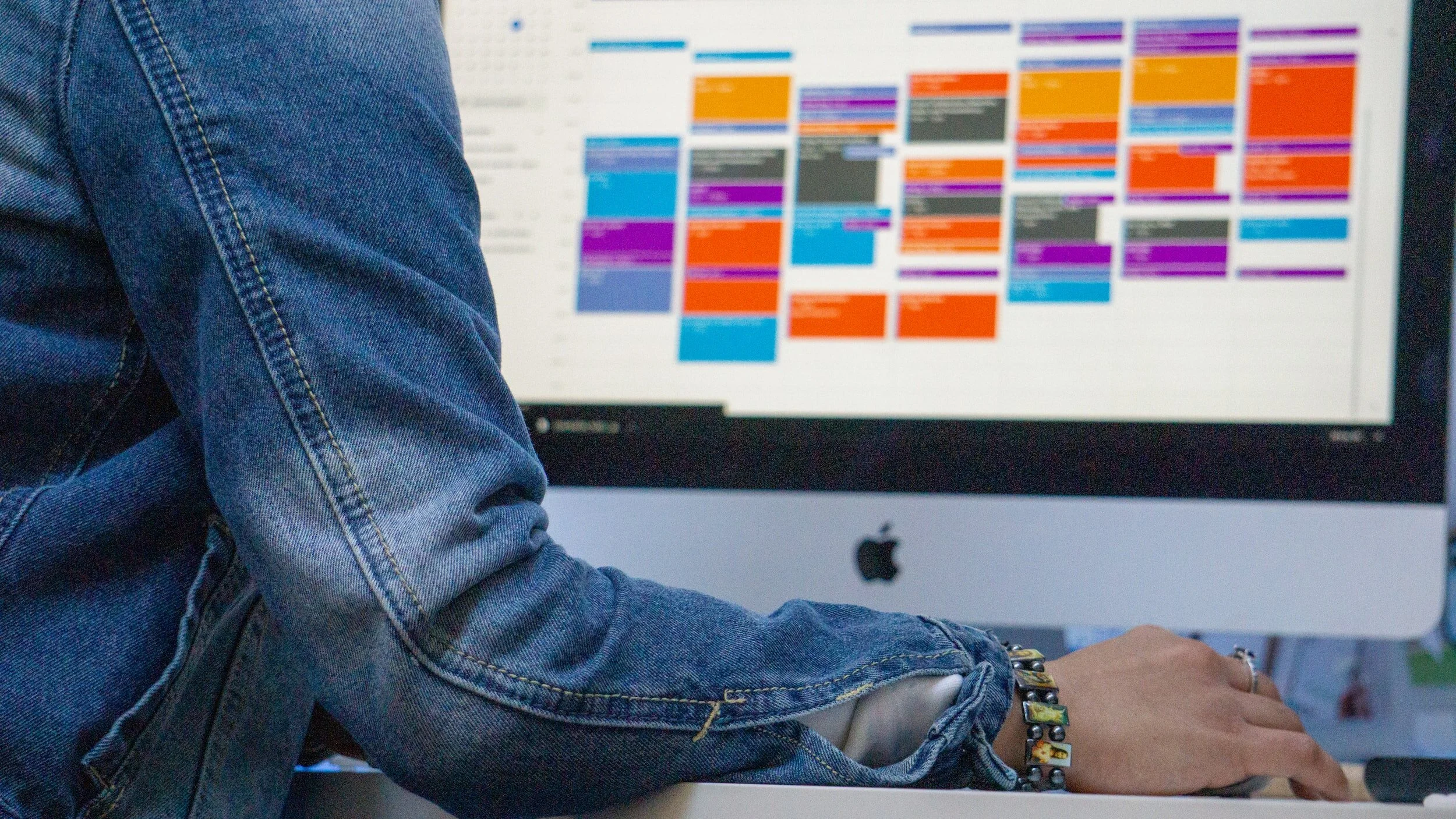Scheduled Spontaneity
A Contradiction of Terms
Is scheduled spontaneity a laughable oxymoron? In today's world, many people, including children, have their days tightly packed with activities and obligations, leaving little room for unstructured play or moments of spontaneity. Scheduled spontaneity is the antidote - intentionally creating time and space for unexpected and unplanned activities in our highly scheduled and structured lives.
While there may be exceptions in certain areas where children still have the freedom to come home from school and play unsupervised, the overall trend leans towards organized after-school activities, supervised homework, and scheduled playdates. This pattern extends to adults as well, with busy schedules and packed agendas becoming the norm.
What is Scheduled Spontaneity?
The concept of scheduled spontaneity challenges this pattern by suggesting the importance of intentionally carving out time for unstructured, creative, and spontaneous activities. It involves prioritizing personal goals and objectives, rather than constantly succumbing to the demands and priorities of others.
By creating space for spontaneity, whether through calendar blocking or consciously leaving room for unstructured time, individuals can break free from the constant busyness and find opportunities for creativity, reflection, and personal growth. This can be achieved through various means, such as meditation or engaging in activities that provide moments of quiet and introspection.
In essence, scheduled spontaneity encourages individuals to strike a balance between their scheduled commitments and the need for unstructured, free-flowing moments that foster creativity, mindfulness, and a deeper connection to oneself and the surrounding world.
What the Experts Have to Say
Stephen Covey, author of the highly influential book "The 7 Habits of Highly Effective People," does not explicitly mention the term "scheduled spontaneity" in his works. However, his principles and teachings touch upon the importance of balance, prioritization, and effective time management.
While Stephen Covey may not have directly addressed the concept of scheduled spontaneity, his teachings on effective time management and personal growth provide a solid foundation for understanding its significance. Covey's emphasis on proactive prioritization and aligning actions with personal values resonates with the idea of intentionally creating time and space for unstructured activities. By applying Covey's principles and integrating scheduled spontaneity into our lives, we can strike a balance between structure and freedom, allowing for moments of creativity, reflection, and personal rejuvenation. In doing so, we honor Covey's call to be proactive stewards of our time and create a more fulfilling and balanced existence amidst the demands of the modern world.
Nir Eyal, author of “Indistractible” discusses the concept of planned spontaneity and how it can enhance productivity and bring more joy to our lives. Eyal argues that productivity and spontaneity are not opposites but can work together effectively. He introduces the concept of timeboxing, which involves planning and allocating specific time blocks for different aspects of our lives, including self-care, relationships, and work. Eyal emphasizes the importance of planning spontaneity by setting aside time in advance, even if the exact activity is not predetermined. He suggests creating a weekly calendar template and regularly reflecting on whether the planned activities align with our values and making adjustments accordingly.
Jonathan Fields, author of the article "Scheduling Spontaneity" in Psychology Today, highlights the importance of scheduling time for unscheduled moments in our lives. While routines and rituals provide structure and productivity, the author argues that the best ideas, connections, and insights often come when we step away and give our minds space to breathe. The article suggests that scheduling time to be unscheduled allows for creativity, serendipity, and the enjoyment of life's playful side. The author emphasizes the need to prioritize unscheduled time, especially as life becomes busier, and encourages readers to embrace spontaneity and live intentionally.
Cal Newport, a productivity and time management expert, has not explicitly mentioned the term "scheduled spontaneity" in his work. However, his philosophy on deep work and intentional scheduling aligns with the idea of creating space for unstructured, creative activities. Newport emphasizes the importance of eliminating distractions, focusing on meaningful work, and cultivating deliberate practices. By adopting his principles and incorporating scheduled spontaneity into our routines, we can strike a balance between deep, focused work and allowing room for spontaneous, creative exploration. This integration can enhance productivity, spark innovation, and contribute to a more fulfilling and intentional approach to work and life.
In her book "I Know How She Does It", Laura Vanderkam explores the topic of time management and productivity for working mothers. Vanderkam delves into strategies for balancing work and personal life, making the most of available time, and finding fulfillment in both professional and personal spheres. While she may not use the term "scheduled spontaneity," her book offers insights and practical tips that can help individuals create more intentional and balanced lives.
Embracing the Unexpected
Scheduled spontaneity invites individuals to challenge the notion that their lives must be dictated by a rigid schedule or endless to-do lists. It advocates for actively prioritizing personal well-being, creativity, and the pursuit of joy. Instead of constantly adhering to the demands of others or feeling overwhelmed by external obligations, it encourages individuals to create intentional pockets of time for self-discovery, exploration, and genuine relaxation.
Making room for spontaneity does not necessarily mean meticulously scheduling specific moments for it. Rather, it involves cultivating a mindset that embraces the unexpected and allows for flexibility within the established routine. It's about recognizing the importance of unstructured time and giving oneself permission to deviate from the usual course of action.
Whether it's rescheduling meetings, reassessing priorities, or simply being open to new experiences, scheduled spontaneity emphasizes the need to take charge of one's own time and make conscious choices that align with personal values and aspirations. It involves actively assessing what is truly important and necessary, rather than being swept away by the urgency of other people's requests or societal pressures.
In this process, creating space for spontaneity can lead to a more fulfilling and balanced life. It allows for moments of rest and rejuvenation, sparking fresh ideas, and fostering a deeper connection to one's authentic self. By incorporating spontaneous and unplanned activities, individuals can tap into their innate creativity, gain clarity and perspective, and nurture a sense of purpose and fulfillment.
Scheduled spontaneity can take various forms depending on individual preferences and interests.
Ten Small Actions You Can Take Today to Schedule Spontaneity
Creative Time: Setting aside a specific block of time each week for creative pursuits, such as painting, writing, or playing a musical instrument. This allows for spontaneous expression and exploration of artistic endeavors.
Adventure Days: Designating a day on a regular basis, like once a month, for embarking on spontaneous adventures. It could involve exploring a new hiking trail, visiting a nearby town or city, or trying out a new activity or sport.
Open-ended Evenings: Dedicate certain evenings of the week as "open-ended" where you intentionally leave the schedule blank. It allows you to be flexible and decide on activities spontaneously, like having impromptu gatherings with friends, trying out a new restaurant, or simply enjoying a relaxed evening at home.
Serendipitous Travel: Planning a trip with some structured elements, such as accommodations and transportation, but leaving room for spontaneous exploration and discovery at the destination. This can involve exploring local attractions, engaging with the local community, or following unplanned paths and recommendations from locals.
Mindful Breaks: Incorporating short breaks throughout the day for mindful activities like meditation, deep breathing exercises, or simply taking a moment to appreciate the surroundings. These breaks provide an opportunity for spontaneity within the daily routine and promote relaxation and self-reflection.
Unplugged Time: Allocating regular intervals of time where you disconnect from technology and engage in activities that encourage present-moment awareness. This can involve going for a walk in nature, reading a book, or simply enjoying quiet contemplation without the distractions of screens and notifications.
Playful Breaks: Incorporating playful breaks into your workday to break up the monotony and stimulate creativity. This could include playing a quick game, solving puzzles, or engaging in a fun physical activity like dancing or playing an instrument.
Surprise Outings: Planning surprise outings or activities for yourself or loved ones. This could be as simple as a spontaneous picnic in the park, a surprise visit to a museum or art gallery, or organizing a surprise date night with your partner.
Random Acts of Kindness: Setting aside specific days or moments to perform random acts of kindness. It could involve surprising someone with a thoughtful gesture, volunteering for a cause you care about, or spreading positivity and joy through small acts of generosity.
Flexible Work Hours: If possible, negotiating flexible work hours that allow for spontaneous breaks or changes in routine. This gives you the freedom to take advantage of unexpected opportunities or simply take a break when needed, promoting a healthier work-life balance.
Remember, the key aspect of scheduled spontaneity is intentionally carving out time and space for unplanned activities or moments of creativity, allowing for flexibility and a sense of adventure within the structured aspects of life.
Ultimately, embracing scheduled spontaneity is a personal journey. It involves finding the right balance between structure and freedom, acknowledging one's own needs and desires, and being intentional about creating space for exploration and self-expression. By doing so, individuals can cultivate a more vibrant, joyful, and meaningful existence amidst the programmed world we live in.
Has this blog inspired you to embrace a path to genuine self-discovery, and to define your authentic identity? If so, please share it with others who may benefit. Together, let’s be…






